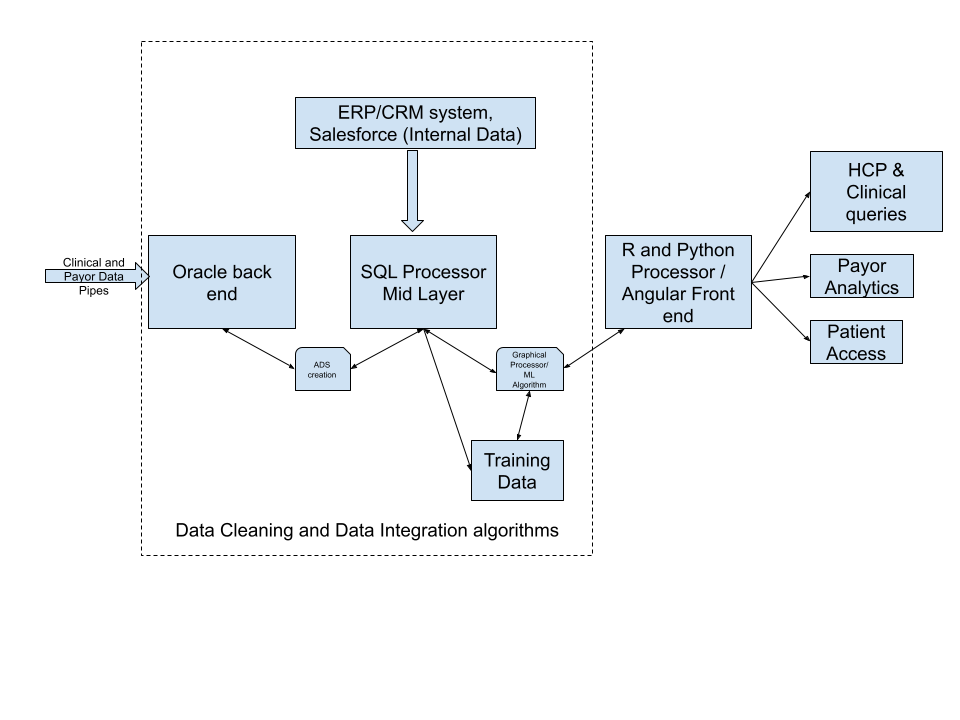- Published on
Leveraging Hybrid Architectures for Enhanced Healthcare Analytics
- Authors

- Name
- Venkat Venkatakrishnan
Revolutionizing Medical Device Development with a Hybrid Agile-Waterfall Approach
Introduction
In today's data-driven healthcare landscape, the integration of clinical and payor data through advanced software architectures is crucial for enhancing patient care and operational efficiency. This white paper explores a hybrid system architecture that combines traditional and modern data processing technologies to support complex healthcare analytics.
The Challenge
The client wanted to reduce the marketing team's ability to reply HCP queries on drug efficacy and interaction for specific patient population segmented based on clinical profiles, payor subscription, and HEOR. The analytics will be governed through data contracts and IRB approved protocols.
System Overview
Our architecture, as illustrated, integrates an Oracle backend with a SQL Processor Mid Layer to manage and process data from various sources, including ERP/CRM systems like Salesforce. This setup ensures robust data handling and scalability, facilitating the extraction and transformation of large datasets for analytical purposes.

Advanced Data Processing
At the core of our system is a dynamic duo of R and Python processors, which interface with an Angular frontend. This configuration allows for real-time data analysis and the presentation of actionable insights. Key components include:
R and Python Processor: Handles complex data analysis, leveraging machine learning algorithms to predict patient outcomes and optimize treatment plans. Angular Frontend: Provides a responsive user interface for real-time data visualization, enhancing decision-making processes for healthcare providers. Data Integration and Cleaning Data integrity is maintained through sophisticated cleaning and integration algorithms that ensure accuracy and reliability in analytics. The system supports seamless data flows from clinical and payor sources, enabling comprehensive health insights.
Conclusion
This architecture not only streamlines data processing and analysis but also supports continuous improvement in healthcare services by providing healthcare professionals with timely and accurate data. This scalable architecture not only provided instantaneous outputs, but provides a saving of at least 10 million USD per year.